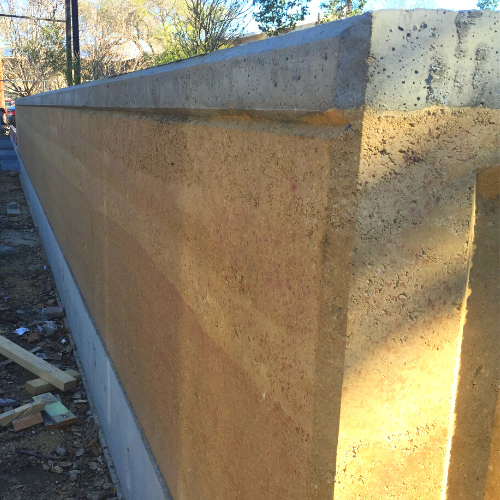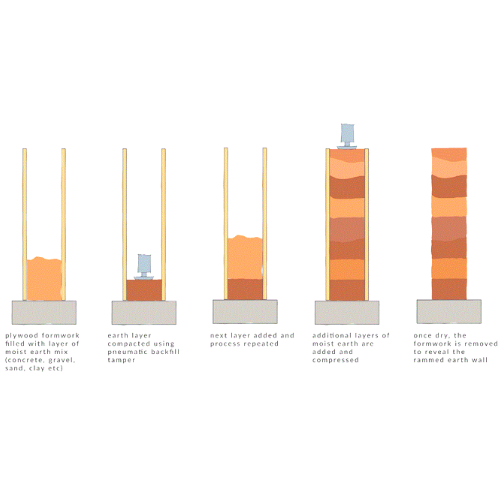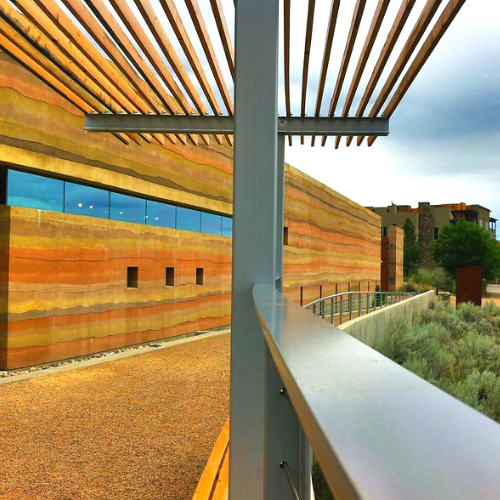What is Rammed Earth?
Rammed earth is a type of construction material made by compressing soil into a formwork. The soil is typically a mixture of clay, sand, gravel, and sometimes cement, which is placed in layers and compacted using manual or mechanical tools. This results in a solid, durable, and stable structure that has a natural, earthen appearance. It has recently seen a resurgence in popularity due to its sustainable and environmentally friendly nature. Rammed earth walls can be left as is or finished with a plaster, paint or stucco.
The History of Rammed Earth
Rammed earth has been used for thousands of years in various parts of the world, including China, India, the Middle East, and Europe. The Great Wall of China, one of the most significant structures in the world, was built using rammed earth over 2000 years ago. The ancient city of Shibam in Yemen, which is a UNESCO World Heritage site, features hundreds of rammed earth buildings that are still standing today.
How is Rammed Earth Made?
The process of making rammed earth involves several steps. First, the soil is excavated and mixed with sand and gravel to achieve the right balance of materials. Water is then added to the mixture to create a wet, workable consistency. This mixture is then placed into a formwork and compacted in layers using manual or mechanical tools. Once the desired height is reached, the formwork is removed, and the wall is left to dry and harden.
Image Courtesy: https://www.firstinarchitecture.co.uk/rammed-earth-construction
Watch here: https://www.youtube.com/watch?v=XrDLI1t37Lk
Suitable Climates for Rammed Earth
Rammed earth is suitable for a range of climates, but it performs best in dry or arid regions with low humidity. The material is porous and can absorb moisture, so it is essential to consider the site's climate and drainage conditions when designing with rammed earth.
Thermal Properties of Rammed Earth
One of the significant benefits of rammed earth is its thermal performance. The material has a high thermal mass, which means it can absorb, store, and release heat. This property allows rammed earth to regulate indoor temperature and reduce the need for heating and cooling systems, making it a sustainable and energy-efficient building material.
Sustainability Aspects of Rammed Earth
Rammed earth is a sustainable building material that offers several environmental benefits. It is made from natural and locally sourced materials, requires minimal energy to produce, and has a low carbon footprint. Rammed earth buildings can also be designed to incorporate passive solar heating and cooling strategies, further reducing their environmental impact.
Notable Buildings that Utilize Rammed Earth
Rammed earth has been used in many notable buildings around the world, including the Australian National University's School of Music in Canberra, the Nk'Mip Desert Cultural Centre in Canada, and the Earth and Water Building in Scotland. These buildings showcase the versatility and beauty of rammed earth and demonstrate its potential as a sustainable building material.
Image Courtesy: alan nixon - Flickr
How Architects Can Use Rammed Earth in the Modern World
Architects can use rammed earth in various ways to create sustainable and innovative designs. They can incorporate rammed earth walls as structural or decorative elements, use the material as cladding or flooring, and combine it with other sustainable materials like timber and glass. Rammed earth can also be used to create sculptural forms and textured surfaces, adding visual interest to a building's design.
Summary
Rammed earth is a sustainable and versatile building material that has a long history of use in many cultures. Looking ahead, the demand for sustainable building materials is on the rise, and rammed earth has a promising outlook. The material's ability to regulate indoor temperature and reduce energy consumption aligns with the growing emphasis on energy-efficient buildings and environmental benefits. As more architects and builders seek sustainable solutions, rammed earth is likely to gain popularity as a viable option. Its long-lasting and durable nature makes it a practical and sustainable choice for buildings of all kinds, from homes to commercial and institutional structures. Notable buildings around the world have utilized rammed earth, showcasing its potential for modern applications. Its resurgence in popularity is due to its eco-friendliness, but successful implementation requires adherence to proper engineering and construction practices to ensure the stability and longevity of rammed earth buildings.
Additional Sources to Read:
https://en.wikipedia.org/wiki/Rammed_earth
https://www.archdaily.com/933353/how-rammed-earth-walls-are-built




